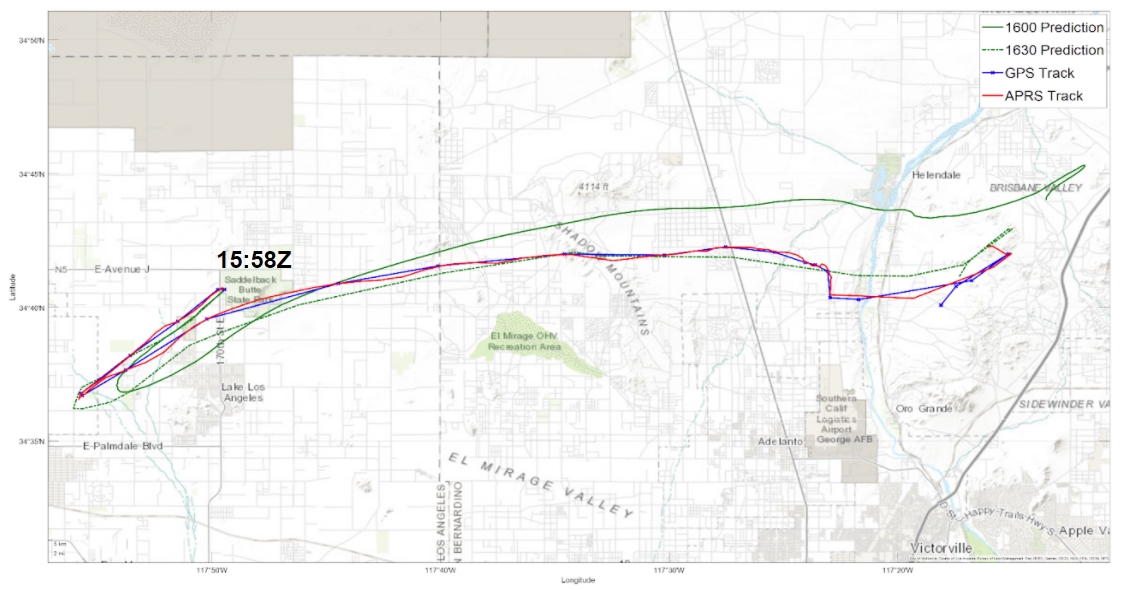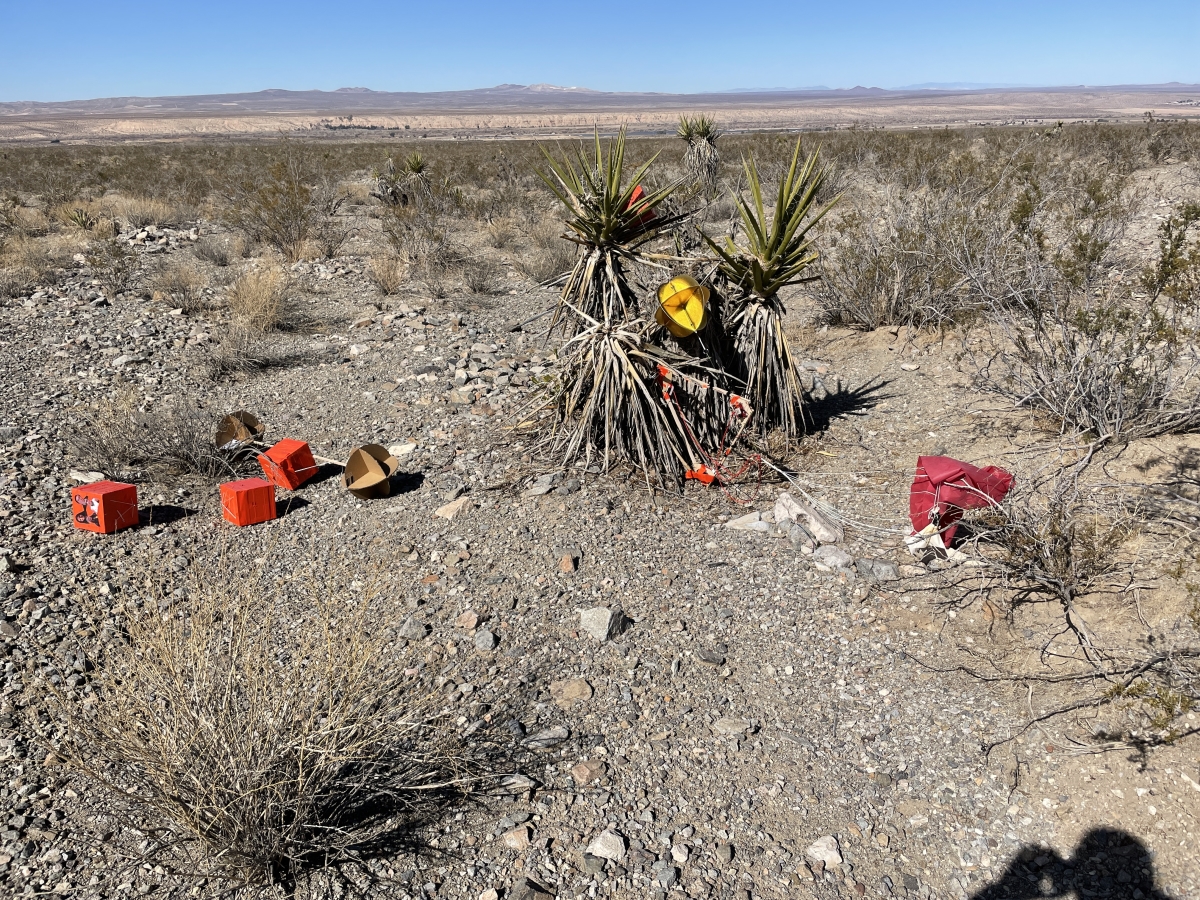Building Payloads to send to Space
Using a thermal vacuum chamber, we characterized and tested various electrical systems and used this knowledge to create payloads for a high altitude balloon (HAB). We were a team of 25 Caltech students divided into different subteams - Flight Planning, Ground Logistics, Launch Coordination, and Tracking & Recovery
Flight Planning
I was part of the Flight Planning subteam, in which we selected the launch location and calculated the projected flight path with the help of http://predict.habhub.org/. We created the Go vs. No-Go criteria encompassing factors such as weather and landing locations. It was a challenge to find a flight path that would not fly into restricted airport space. Who knew there are so many tiny airports everywhere! We planned the flight path so the payloads would land in the desert, away from populated areas.
Below is a visualization of our predicted path(s) in green as well as the actual path from the GPS.

Launch
We left campus at around 5AM to get to the launch site, and launched the balloon by 8AM. As soon as we launched, every team member hopped into the car to track the balloon on the ground. Ham radios and APRS (Automatic Packet Reporting System) were used. We roamed around the desert following the balloon around in hopes to be the first to catch the payload when it lands.
